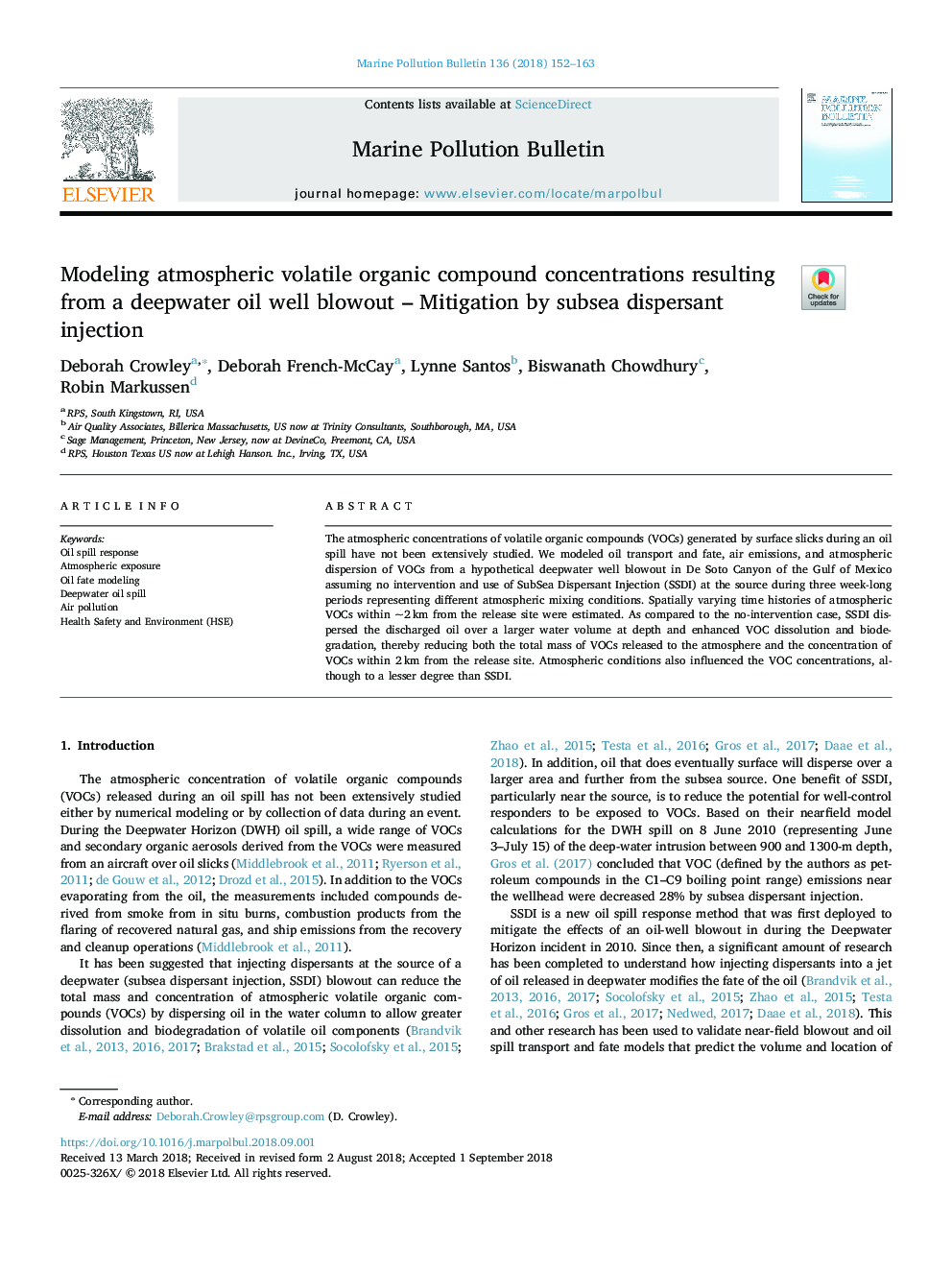| Article ID | Journal | Published Year | Pages | File Type |
|---|---|---|---|---|
| 10149697 | Marine Pollution Bulletin | 2018 | 12 Pages |
Abstract
The atmospheric concentrations of volatile organic compounds (VOCs) generated by surface slicks during an oil spill have not been extensively studied. We modeled oil transport and fate, air emissions, and atmospheric dispersion of VOCs from a hypothetical deepwater well blowout in De Soto Canyon of the Gulf of Mexico assuming no intervention and use of SubSea Dispersant Injection (SSDI) at the source during three week-long periods representing different atmospheric mixing conditions. Spatially varying time histories of atmospheric VOCs within ~2â¯km from the release site were estimated. As compared to the no-intervention case, SSDI dispersed the discharged oil over a larger water volume at depth and enhanced VOC dissolution and biodegradation, thereby reducing both the total mass of VOCs released to the atmosphere and the concentration of VOCs within 2â¯km from the release site. Atmospheric conditions also influenced the VOC concentrations, although to a lesser degree than SSDI.
Related Topics
Physical Sciences and Engineering
Earth and Planetary Sciences
Oceanography
Authors
Deborah Crowley, Deborah French-McCay, Lynne Santos, Biswanath Chowdhury, Robin Markussen,
